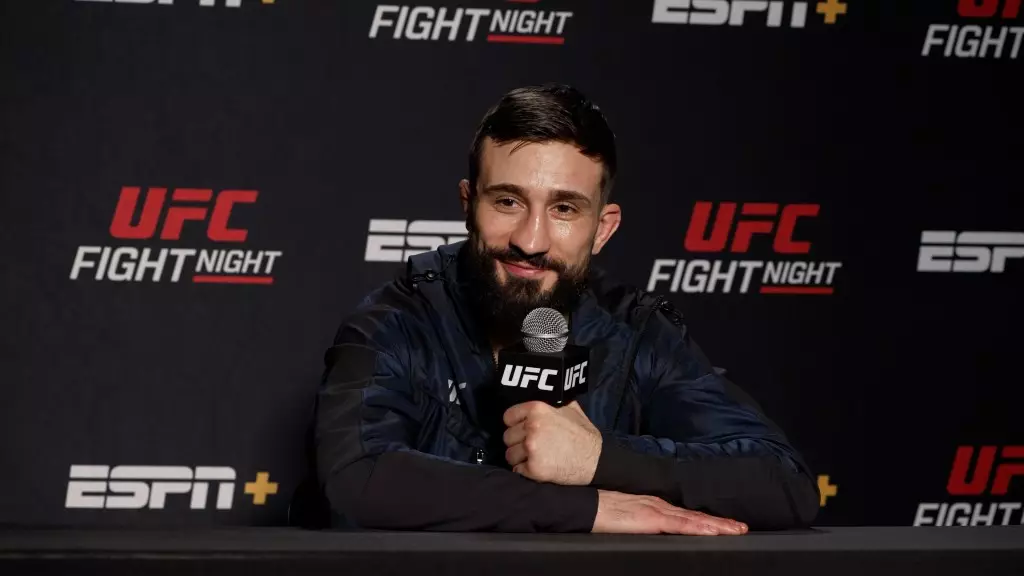In a striking contest that showcased the brutal realities of mixed martial arts, Nazim Sadykhov’s bout against Ismael Bonfim at UFC Fight Night 251 ended in unexpected controversy. The fight was halted by a ringside physician due to the visible damage sustained by Bonfim, which Sadykhov firmly believes stemmed from a well-executed kick that he himself had trained extensively for. This incident raises important questions about the criteria for stopping a fight, particularly in a sport where punishment is a fundamental element of its appeal. The narrative surrounding Sadykhov’s performance suggests that the stoppage was not merely the result of a language barrier or miscommunication, but rather an affirmation of the impact he inflicted through his striking prowess.
Sadykhov’s comments post-fight reflect a thoughtful understanding of the Unified Rules of Mixed Martial Arts, where “damage” is a pivotal criterion for evaluating fights. The fighter emphasized that it was his meticulously planned strike—a “question mark kick”—that sealed Bonfim’s fate, demonstrating how strategic training can directly translate into effective in-fight execution. He expressed confidence in the work done during his training camp, illustrating the essence of preparedness in combat sports. By focusing on significant strikes rather than incidental injuries, Sadykhov highlights a growing philosophy within MMA that prioritizes substantive damage over mere presence inside the cage.
Despite a sporadic fight schedule, Sadykhov has managed to maintain a trajectory of success, with his most recent fight being his first since November 2023. He attributes his growth and performance to a dual training approach that incorporates traditions from both Syndicate MMA in Las Vegas and Longo and Weidman MMA (LAW MMA) on Long Island. This blend of environments not only enriches his technical abilities but also fortifies his mental resilience. In a sport often characterized by unpredictability, such consistency in development is invaluable. His experiences over the past year serve as a testament to the importance of adaptability and continuous learning within the sport.
Looking forward, Sadykhov is eager to capitalize on his momentum. With aspirations to return to the octagon as early as April, he remains prepared to confront any opponent that comes his way. His reflections reveal more than just a readiness to fight; they showcase an understanding that each match is an opportunity for growth and evolution. As he navigates through the complexities of the MMA landscape—including training commitments and fight schedules—his posture remains optimistic and focused. After all, in the world of MMA, where each fight can change a career trajectory, Sadykhov’s mindset may be one of the most potent weapons he has in his arsenal.
Nazim Sadykhov’s experience at UFC Fight Night 251 serves not only as a snapshot of a singular fight but also as an illustration of broader themes within mixed martial arts—particularly the significance of strategic damage, the philosophy of training consistency, and the anticipation of future challenges. As the sport continues to evolve, fighters like Sadykhov will be at the forefront, ready to carve their path through both triumph and adversity.

